Text
Research at the Bonotto Foundation
I was lucky enough to have the possibility to spend 2 weeks at the unique site of the Bonotto Foundation in Italy.
During my research period I concentrated on the work of female visual poets - as part of my doctoral research project. Besides reading I also had the chance to be familiar with the structure and the characteristics of the art collection.
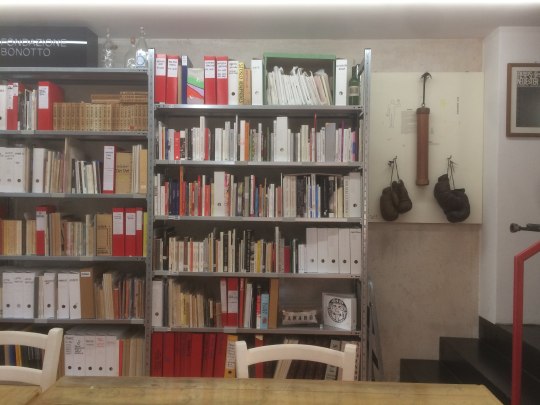
The Bonotto Foundation is an art collection of mainly Fluxus and Visual Poetry created thanks to the dedication of Luigi Bonotto to experimental art. As the head of Bonotto Spa. a leading textile firm established in the Seventies, he also has a huge network of contacts among artists internationally. From the Eighties the house of Luigi Bonotto in Molvena became an important center for cultural research and a point of interest where many artists were invited. As a result of these ‘vacations’- today we would call them ‘artist residences’ the leading figures of experimental art and fluxus visited Bonotto. The collection slowly developed into a huge estate of artworks from Yoko Ono to Adriano Spatola, from Maciunas to Lamberto Pignotti and others. As the textile factory has become prosperous during the years the collection is also enriched with unique works from renown international artists. There are many memorable stories which illustrate the path of Luigi Bonotto who in a couple of decades from a successful entrepreneur became an art collector of international reputation. One of the most famous memory of his past is the occasion when he played chess with Marcel Duchamp. His talks about his personal experiences in this recent volume:
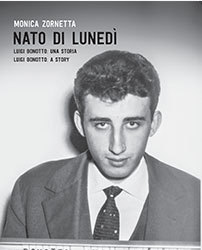
By 2013 the collection has grown so huge that it was impossible to handle by Luigi at home. The Foundation was born that year in order to have a proper space and institutional background for the collection. Since then the Fondazione Bonotto is at the same site of the factory in Molvena, a small town between Bassano del Grappa and Vicenza in Veneto.
The collection is unique from anoher (practical) point of view as well: the artworks are partly stored in a storage room and partly are “exhibited” in the spaces of the currently working textile factory.
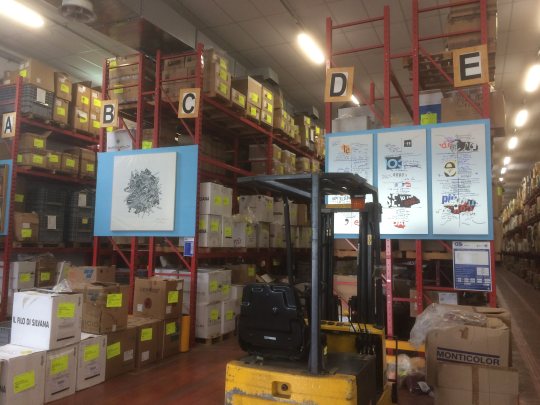
As a very first step of institutionalization the entire collection has been digitalized and made available online on the site of the Fondazione, It took years to complete this huge work as the collection counts more than 30 thousand pieces (of artworks, original documents, artists’ books, documentation materials, etc)
I was told that even the collector does not know the exact number of the artorks in his collection and it is continually growing - by acquisitions and by occasionally “finding” important pieces at home - not cataloged previously.

During my stay I had the chance to get an insight into the daily work of a private art foundation and also got familiar with the archiving and cataloging practices.
The small “staff” was extremely helpful and showed my the way they work and handle documents and artworks. (Grazie, Laura!)
Also the aim of m stay was to dedicate undivided attention to my research topic: Italian Female Visual Poetry as part of my doctoral thesis. The materials - catalogs, bookworks and originals - available for research at the Fondazione were really useful and I was able to enrich my knowledge on female experimental poets. This is an important aspect also because in this field there is always a lack in research materials on women artists.
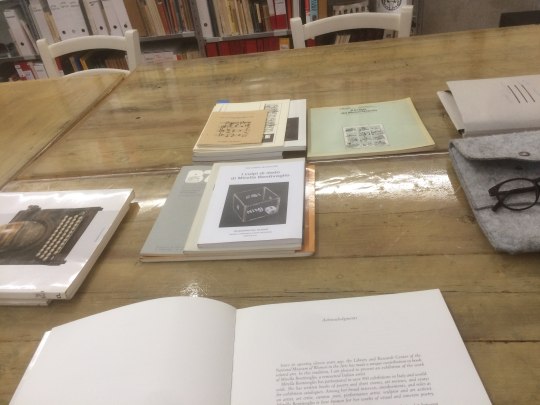
I consulted materials on the following artists, leading figures of different tendencies within Italian visual poetry:
Mirella Bentivoglio, Betty Danon, Irma Blank, Caterina Davinio, Ketty La Rocca, Lucia Marcucci, Anna Oberto, Patrizia Vicinelli, Elisabetta Gut, Giulia Niccolai.
I am grateful to the Fondazione Bonotto for their professional support!
#bonotto#bonottofoundation#art#visual poetry#italian art#feministart#concrete poetry#Experimental Poetry#phd research
5 notes
·
View notes
Text
Ketty La Rocca!
First, I share some works as part of a larger project on women in visual poetry.
You can find a series of my posts on Ketty La Rocca here and here and here and here and here (in HUN).

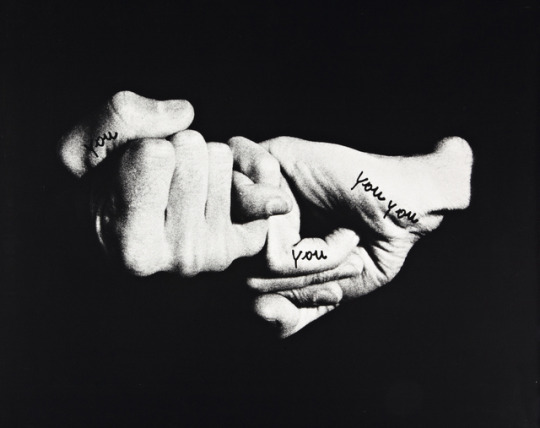
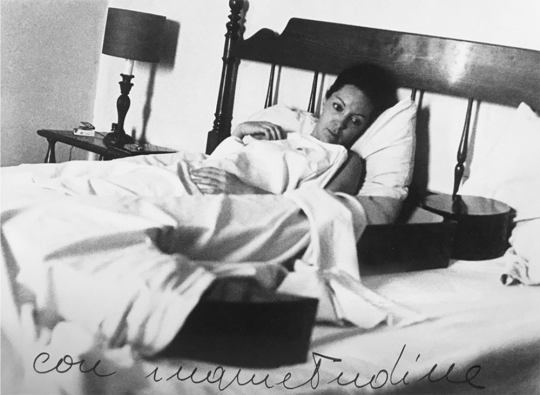




#Ketty La Rocca#visualpoetry#italian#photo#feministart#poetry#artwork#writing#concept#brain#hand#bodyart
19 notes
·
View notes
Text
Women in Visual Poetry!
New series on Arthisteria!
Women in Visual Poetry - a new artist every week!
1st: Tomaso Binga
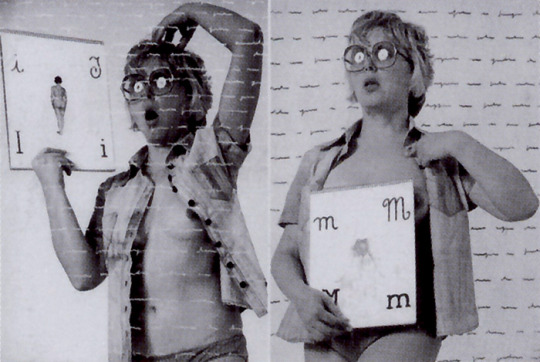

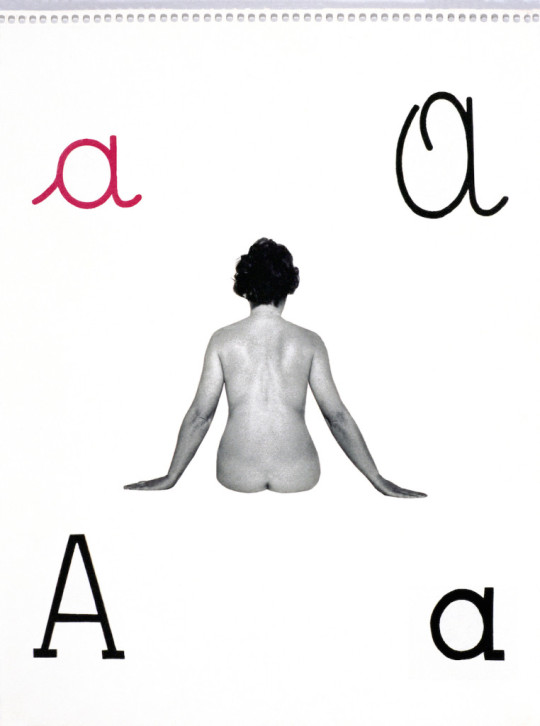
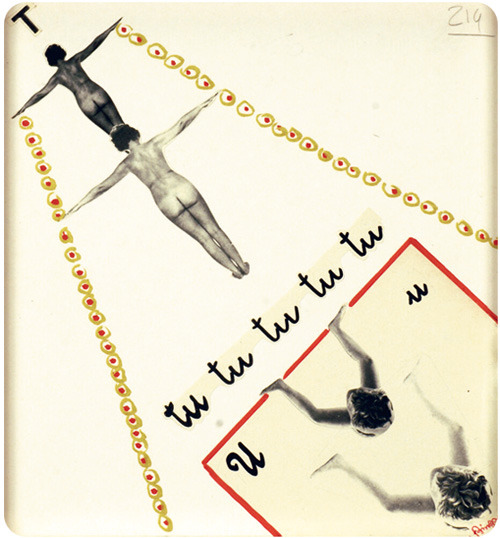
#tomasobinga#arte#art#visual poetry#feminism#female artist#performance#body art#revolution#worlds#collage
23 notes
·
View notes
Text
Land Art & Visual Poetry

What do words and nature have in common? What is the proper definition of ‘environment” and of “poetry”? How can poetry and environmental art be related? What is the intersection of visual poetry experiments and land art practices? What is the role of this hybrid genre in contemporary art?
- - - -
Based on a serious research on the interrelations between land art and verbovisual expression, we are preparing an exciting new project on Arthisteria!
Stay tuned!
2 notes
·
View notes
Text
Öyvind Fahlström 3
Previously we discovered the unique art of the Swedish artist, this time we take a close look on his Manifesto of Concrete Poetry (1952-55)
(Still based on the materials in the collection of the Artpool Art Research Center, Budapest)

Interestingly enough the manifesto of Concrete Poetry written by Öyvind Fahlström (years before his Brazilian colleagues) does not speak of what we generally call “concrete poetry”.
The greatest difference between the two points of view of concrete poetry can be defined as the “abstraction/concretion” opposition. Although both concrete poetry sides had the aim to create a new genre, a new type of artistic expression based on the possibilities of poetry and visual elements, their experiments took different directions.
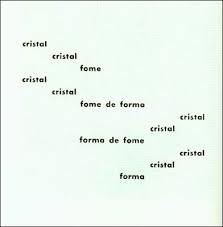
Haroldo De Campos
The Brazilian approach (Haroldo and Augusto De Campos, Décio Pignatari) is based on strict geometrical rules, the “economy of expression” is crucial in order to create a fusion of visual and verbal elements. Words are placed in the space according to the structure of the poetic composition - space gains a fundamental role in the creation of the poem.
As they put is: “ CONCRETE POETRY: TENSION OF THING-WORDS IN SPACE-TIME”
On the other hand, Fahlström deals with poetry in a much more liberal way, uses playful methods and encourages the free creative process.
His manifesto can be seen as a(n almost) complete list of the possible ways of creating poetry with vocal, verbal and visual elements. Tongue-twisters, word and letter constructions, automatism, onomatopoetic methods are all part of his inventory.

(For Fahlström sound poetry and the potentials of voice are also important, in his other works he deals with creative processes related to bird sounds.)
As it was mentioned before, the concrete music strongly influenced the artistic point of view of Fahlström. The de-construction of verbal and visual material in order re-construct a new structure from the elements is inspired by Pierre Schaeffer ’s method.
To summarize the alternative concepts of concrete poetry we have to say that there is a terminology issue: both directions of experimental poetry presented above calls itself “concrete”, but according to the what we use as standard terminology, the Brazilian type is closer to the constructivist-stlye concrete poetry. Fahlström plays with words and structures but his artistic production is less related to the experimental poetry scene, he is more an experimental artist than a visual poet.
#öyvind fahlström#art#poetry#brazil concete#concrete poetry#terminology#art history#manifesto#Experimental Poetry
2 notes
·
View notes
Text
Öyvind Fahlström 2
We continue our adventurous journey to explore the art of the Swedish poet-writer-designer-critic Öyvind Fahlström.
Still based on this great work of Teddy Hultberg (can be found in the Artpool Art Research Centre - available bibliography on ÖF. here).

One of the most interesting, although less known works of the Fahlström- oeuvre is the “ Hätila ragulpr på fåtskliaben: manifest för konkret poesi (Hipy Papy Bthuthdth Thuthda Bthuthdy: Manifesto for Concrete Poetry) “
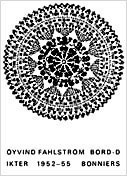
This tiny book is the first publication of the Manifesto (Bord-Dikter 1952-55), in a small stenciled journal, because of this it only reached a limited public. It was re-published in 1966, still in Swedish, this time it had some echo, but
the real acknowledgement of the Manifesto was the result of the English translation by Mary Ellen Solt ( Mary Ellen Solt -- Concrete Poetry: A World View (1968)
The Manifesto with the strangest title ever (in the English translation the first part is simply missing) was born from the interest of concrete music. Fahlström was inspired by the studies of Pierre Schaeffer , (a French composer and musicologist) his concrete artistic theory influenced Fahlström’s artistic point of view. Shaeffer recorded sounds, then he “recomposed” the single fragments and created a new sound-work, what he called ‘musique concrète’.
youtube
Based on this method, Fahlström tried to approach language the same way. Despite of what one might think from the title, this Manifesto is not a systematic coherent piece of work. “It is an undogmatic, ungraded inventory of different poetic techniques, a list that may be considered remarkable itself”.
Poetry is the principal theme of the manifesto but the way Fahlström applied it took it beyond literature. What we read is basically a list of the possible poetic techniques that can be used on order to create an (experimental) poem.
Speaking of poetry, there is an important question: what has the manifesto in common with what we call concrete poetry today?
First of all, as I mentioned above, the Manifesto was known by a broader public only in the Sixties. By this time, the original concept of concrete poetry (invented by Eugen Gomringer and the Brasilian Noigandres group in the early Fifties) has become a well-known (canonized?) artistic tendency, related to geometrical-abstract art.
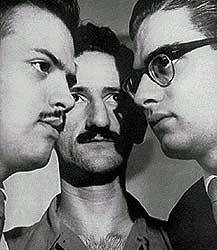
The Noigandres group (Haroldo de Campos, Décio Pignatari, Augusto de Campos)
The trick is that the Manifesto of Fahlström was born years earlier (1953-54) than the similarly titled document (1958) of the Noigandres group!
But the Swedish Manifesto remained unnoticed for almost a decade. On the other hand, how come that the “Brasilian-raised” Fahlström did not know the “plano-piloto da poesia concreta” (Pilot Plan for Concrete Poetry) of the Noigandres?
Hard to believe the answer: “he had trouble reading in Portuguese”. (I am referring to my own note in the previous post, check it out!)
Anyhow, the authors of the parallel manifestos of concrete poetry did not know each other. Strange, but true.
However, is to be said that their concepts of concrete poetry were far from identical. The differences are going to be detailed in the next post!Stay tuned!
#concrete poetry#art#poetry#Experimental Poetry#brasilian concrete poetry#öyvind fahlström#manifesto#sweden
1 note
·
View note
Text
Öyvind Fahlström 1.
It’s time to actually start our journey towards the interesting adventures of the unique Swedish artist, Öyvind Fahlström!
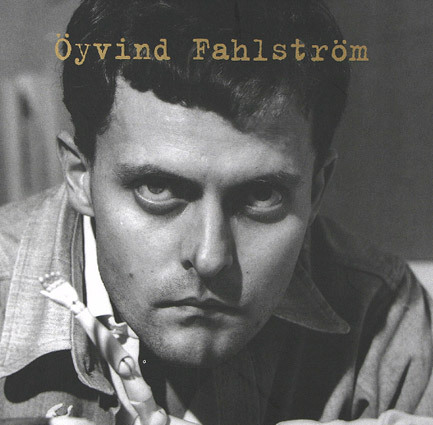
This short presentation is based on the materials int he collection of the Artpool Art Research Centre Budapest.
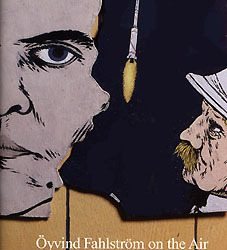
Teddy Hultberg: Öyvind Fahlström i etern - Manipulera världen = Öyvind Fahlström on the air - Manipulating the world : birds in Sweden, the holy Torsten Nilsson, pictures & manuscripts, Stockholm : Sveriges Radio Förlag [u.a.], 1999.

Öyvind Axel Christian Fahlström was born in São Paulo to a Norwegian father and a Swedish mother. He spent his childhood in Brazil in Portuguese and English language environment and schools.*
(NOTE1: *this is the first interesting point in his biography, because later he claims that he had trouble reading in Portuguese, that is why he did not know the major theoretical works of Brazilian concrete poetry...)
1939: is the year of the radical change in his life. The ten years old Öyvind travels to Sweden to spend the summer with his aunt. Meanwhile the World War II breaks out and he is forced to remain in Sweden for nearly a decade. This traumatic experience shaped his later artistic style and approach.
After finishing school he is interested in classical studies and art history. Travels to Italy and France to meet artist and poets. The art of the Italian painter, Giuseppe Capogrossi had a strong impact on the young Fahlström.

(NOTE2: Capogrossi is the only visual artist mentioned in the Manfiesto of concrete poetry (1953))
I his book, Teddy Hultberg describes the multitude of the artistic activity of Fahlström in the 1950s-60s with the following words:
“Fahlström is the embodiment of the concept of the boundery trascending multi-artist.:poet, dramatist, painter, radio artist, critic ecc. “
He is interested in theatre and poetry, journalism, criticism, translations and visual arts in the same time.
1952-53 are important years in his artistic development. He starts to create the monumental artwork Opera, a room-sized drawing using felt-pen.
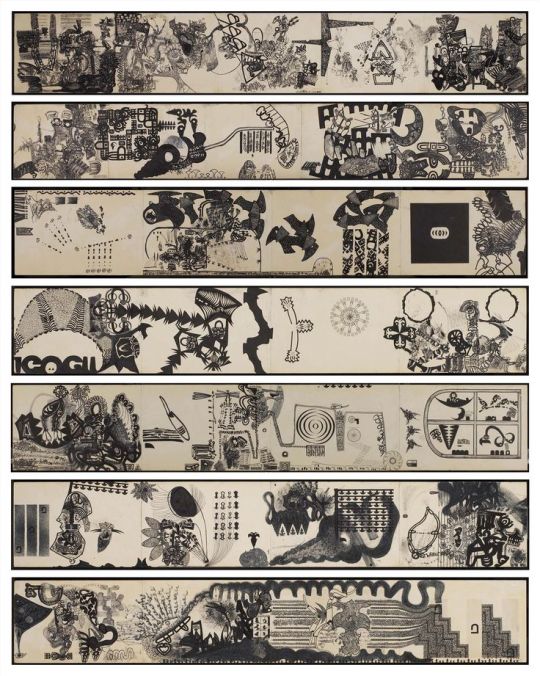
He works on this oversize work of art for several years simultaneously with writing the Manifesto of concrete poetry, his greatest theoretical work, published only in 1954. The different ways of self-expression had influence on both “creations”.
// to be continued //
The next post is entirely dedicated to the Hätila ragulpr på fåtskliaben: manifest för konkret poesi (Hipy Papy Bthuthdth Thuthda Bthuthdy: Manifesto for Concrete Poetry). Don’t miss it!
#öyvind fahlström#art#poetry#concrete poetry#brasil#sweden#europe#artwork#felt-pen#artist#Experimental#artpool#budaest
1 note
·
View note
Text
ARTPOOL & Arthist3ria cooperation!
We are happy to announce that this post is the starting point of a definitely fruitful cooperation with one of the best Experimental Poetry and Fluxus Archive in Europe, the Artpool Art Research Centre.

It is a unique collection of Fluxus, Dada, Visual Poetry, Sound Poetry, Experimental Theater, Performance, Happening and the so-called “unofficial” or Underground art of the 70s-80s in Hungary. Thanks to the international network of cooperations with artists there is a huge amount of stuff in foreign languages (English, Italian, German etc.) as well.
Artpool offers a wide range of materials from artist-related documentations, books, original videos, sound recordings, to CDs, reprints, journals, catalogues... The research centre is situated in Budapest, Hungary and it’s door is wide open for the researchers from all over the world. (visits by appointment)
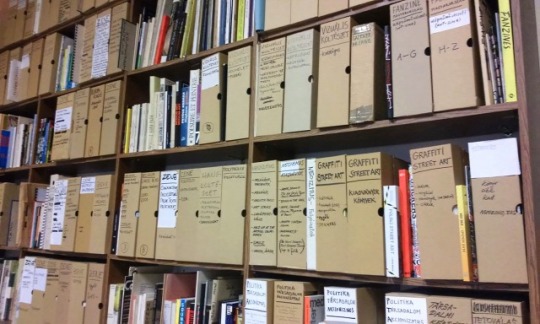
Thanks to the months spent in Artpool doing my experimental poetry research, I had the possibility to explore the richness of this archive. As a result of this cooperation, I am going to share posts based on the Artpool-materials.
As a next step of the Sound Poetry Series, the presentation of the Swedish Fylkingen Group is followed by the Swedish-Norwegian-Brazilian artist, Öyvind Fahlström!
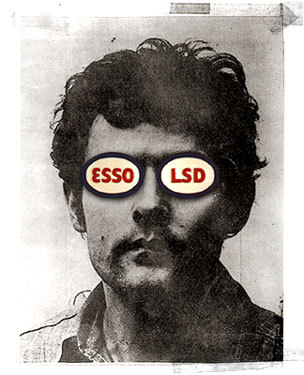
What is the connection between the Swedish Sound Poetry and an artist related to Pop Art and comics?
How can you translate bird voices?
Who wrote the very first manifesto of concrete poetry?
You can find the answers in the next post! Stay tuned!
#öyvind fahlström#sound poetry#artpool#Experimental Poetry#researh#archive#project#art#visual poetry#upcoming#cooperation#Budapest
1 note
·
View note
Text
Fylkingen 2
Continuing our trip in the sound experiments let’s hear some artworks:
Bernard Heidsieck french sound poet realized this sound production (Sisyphe) in 1977 in the Fylkingen studio Stokholm.

0 notes
Text
SP Experiments: FYLKINGEN
FYLKINGEN group
As we have seen in the previous post it is hard to define precisely what is sound poetry. A wide range of experiments in the field of vocal-oral-phonetic representations. Sounds and waves, words and screams are all part of the sound poetry innovations. This time we are approaching from the music to the poetry with a ‘case-study’ from Sweden.
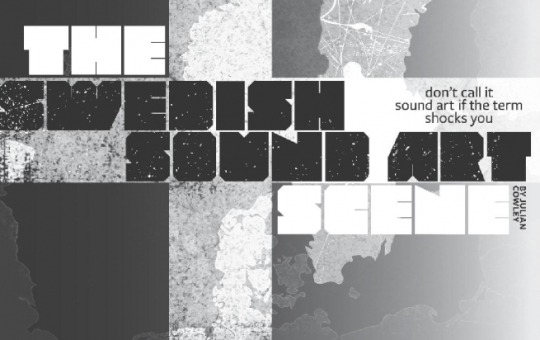
FYLKINGEN is an experimental art group focusing on intermedia and sound works. Brief history:
“Fylkingen formed 1933 as a chamber music concert organizer. In accordance with the development of contemporary music, however, the field expanded and was specified during the 60ies to embrace “radical and experimental new music and intermedia art”.
Fylkingen, which 1959-1970 mainly had its concerts on the Moderna Museet Stokholm had many visits of John Cage from 1958 to 1964), who, with his open attitude probably affected Fylkingen’s members deeply. Fluxus also had strong impact on the Swedish avant-garde culture during these decades.
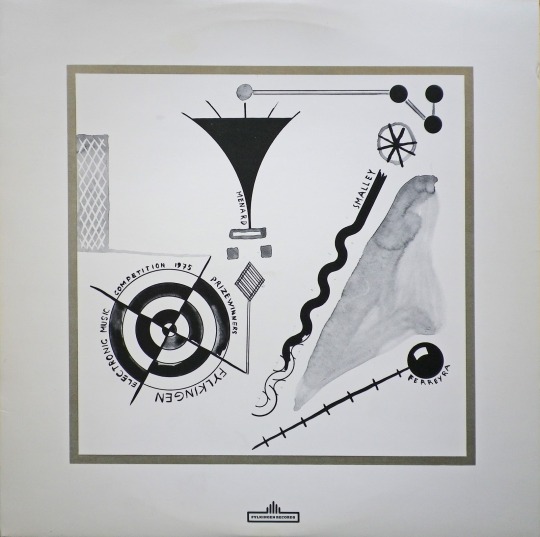
The group (members: Lars-Gunnar Bodin, Sten Hanson, Åke Hodell, Bengt Emil Johnson and Ilmar Laaban) has changed its name in the Sixties: the Fylkingen Group for Linguistic Arts.
As innovators in various fields of art (mainly intermedia) they created electronic music experiments - organized concerts and broadcasted in the Swedish Radio as well. It was the Fylkingen that showed the Swedish people the electronic music in the Fifties.
In the Sixties Sweden has become a fertile and inspiring place for avant-garde art and revolutionary musical ideas. Not by chance the Swedish word gränsöverskridande- literally means ”boundary crossing” is generally used key word of the art of the period.
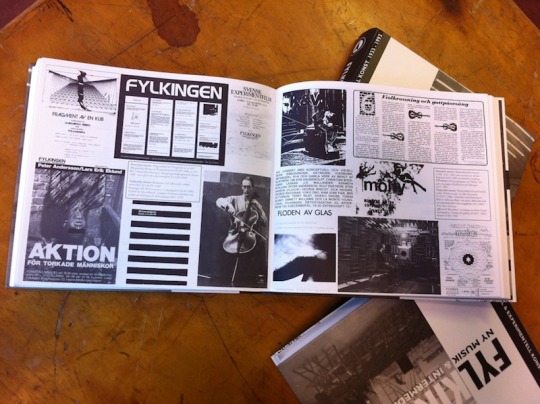
Fylkingen had various specialized working groups for different areas: computer music (yes, even though computers were not common), acoustics, gramophone record production and Language group with the goal of creating strong international relations.
Here you can find a long list of Fylkingen-related sound works from 10 years of Experimental Music Festivals in Sweden.

//By the way Öyvind Fahlström was also Swedish, the author of the Manifesto of Concrete Poetry in the early 1953. But his relations with the Fylkingen were problematic.//
Today Fylkingen is an intermedia art space and a concert venue with experimental music performances like this:
vimeo
It is not easy to draw a borderline between experimental music and sound poetry...
1 note
·
View note
Text
Sound Poetry1 - The Basics
First lesson: What is Sound Poetry?
Basically the expression can be translated into a formula: Sound Poetry = Sound+ Poetry. As simple as that. But when you have to explain or define each component is not the easiest thing to do....
There are several possible ways to approach this particular section of Experimental Poetry. It seems - to me -- that the most logical way is to explain the phenomena from the ‘sound’ and from the ‘poetry’ point of view as well.
Many researchers and theoreticians say that Sound Poetry is poetry which uses sound as a form of expression. This definition is correct but in order to see it’s point we have to first define what is poetry and what is sound. This is going to be the scope of this series, based on examples and explorations.

Listen to sound poems Ursonate by Kurt Schwitters and Lo stato sono io by Arrigo Lora-Totino!
Here you can find countless sound poetry works from all over the world from the beginning of the 20th century up to nowadays.
Stay tuned!
1 note
·
View note
Text
Sound Poetry Series!
I’m happy to announce the new experimental poetry project on Arthisteria!
February is the month of sound poetry this year, so I am going to share (almost) every day a new sound poetry work! As part of my doctoral research I focus on the interesting and sometimes not-so-easy-to-understand slice of the experimental poetry scene. It is gonna be strange but worth the try :)
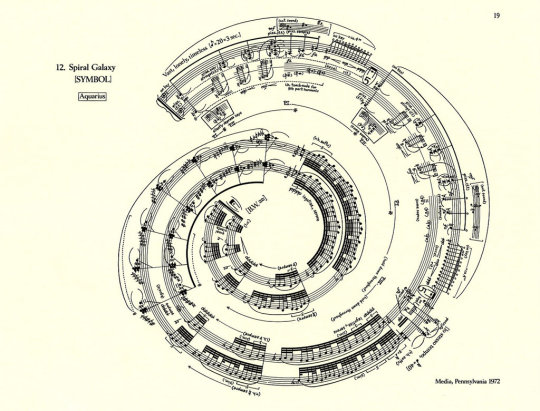
From futurism to fluxus, form dada to concrete poetry there will be a lot of fun sounds from all over the world! Stay tuned!
1 note
·
View note
Text
Carlfriedrich Claus
I have no Hungarian letters on my keyboard so I decided to write this post in English :)
I found an interesting artist today, the German Carlfriedrich Claus (1930-1998). His work is somewhere between “philosophy, art, linguistics and acoustic literature“. Small scale handwriting and extremely precise compositions characterised by an uncommon sense of complexity. Strangely his artistic point of view reminds me of Bèla Kondor, the great Hungarian artist.
Let’s see some works of Carlfriedrich Claus:
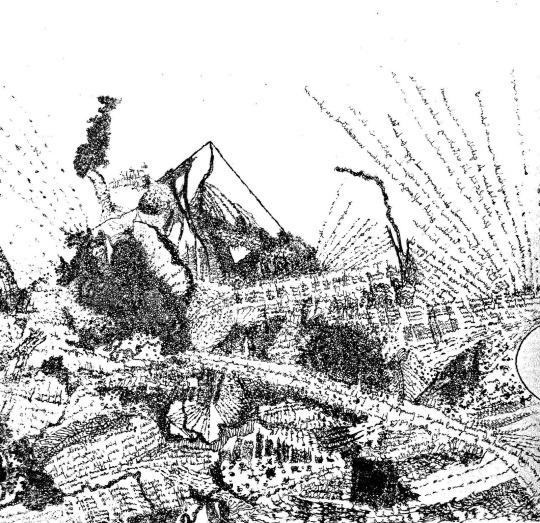


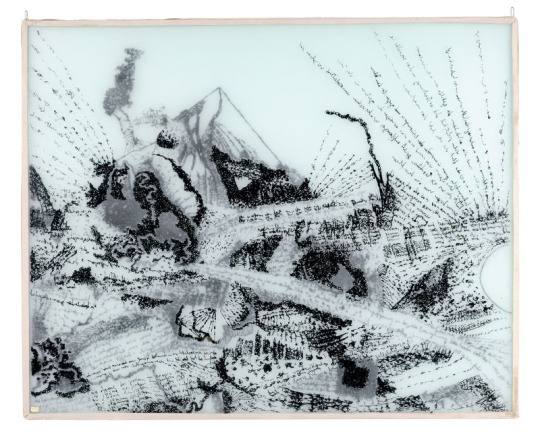
2 notes
·
View notes
Photo

Christmas greetings from Dick Higgins!
0 notes
Photo

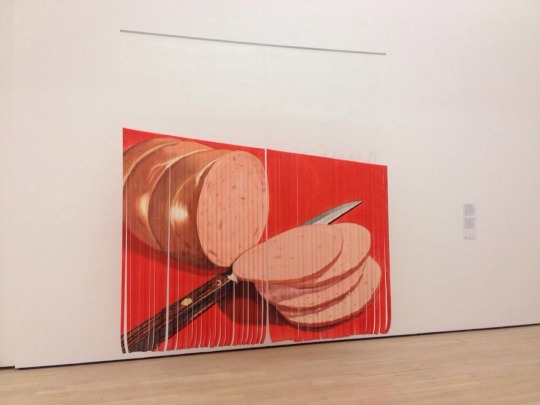
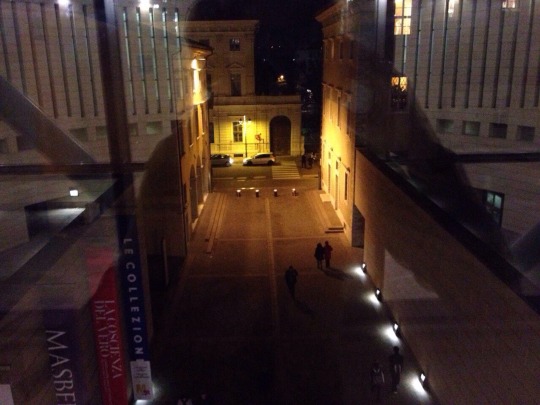
Muzeumi mindennapok a vege fele...
0 notes
Photo
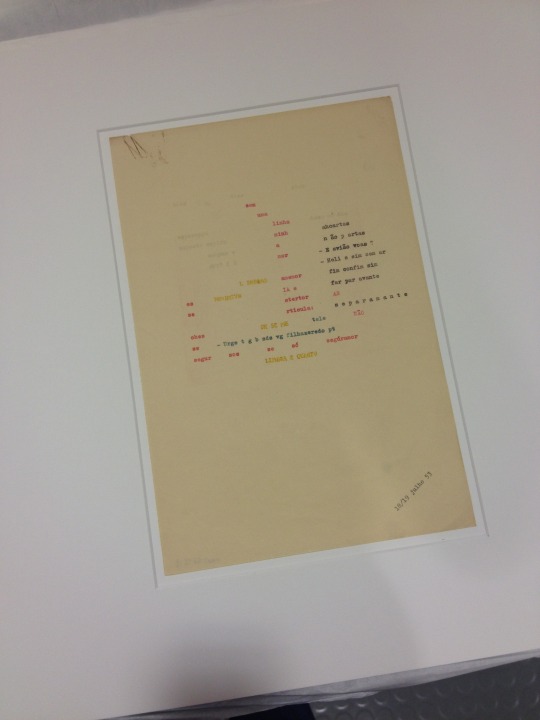



A brazil konkrét költészet ősatyáinak (Augusto és Haroldo De Campos, Décio Pignatari) munkáit élőben látni egy kísérleti költészeti kutatónak (najó, lehet, hogy csak nekem) legalább akkora élmény, mint egy őslénykutatónak őslénycsontot találni.
1 note
·
View note
Text
Ian Hamilton Finlay
Arthisteria-különszám különc skót művésszel.
Ian Hamilton Finlay munkáival (képeslapterveivel és kis méretű nyomtatott kiadványaival) a Mart Archívumában találkoztam és az alapos rendszerezés során megtetszett.

Bár konkrét költőként is számon tartják, inkább kiváló grafikai ízlésről és nyelvi-vizuális találékonyságról tanuskodnak a munkái, a látásmódja viszont tényleg egyedülálló.
Ian Hamilton Finlay élete jól indult, a Bahamákon született 1925-ben, hatéves korában bentlakásos iskolába küldték Skóciába. A hajózás, a tenger, a víz közelsége egész életműve során visszatérő elem maradt. Nem volt egyszerű figura, már felnőtt korában derült ki, hogy rendszeres pszichés problémái agorafóbiából erednek. Emellett és ezzel együtt többször került összetűzésbe munkatársaival, kiadókkal...
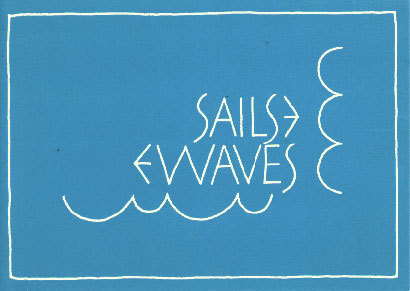
Költőként indult, több kötete is megjelent karrierje kezdetén, majd 1961-ben megalapította a Wild Hawthorn Press nevű kiadót, amely Finlay saját műveinek kiadójaként ontotta a képeslapokat, terveket, vázlatokat, egy-két oldalas mégis igényes printeket.

Finlay kis alakú munkái inkább igényes papírbolti terméknek tűnnek első látásra, finom tipográfia, minőségi színes papír, ízléses megformáltság. Közelebbről nézve kiderül, hogy nyelvi szellemesség és szolid irónia teszi őket igazán különlegessé.

A nyomtatott anyagoknál sokkal híresebbek a kert-tervezési kísérletei és kőbe vésett versei. A betűk és a tárgyak társításának végtelen lehetőségeit járta végig. Nem kézenfekvő, de valójában munkái nagy részét egyáltalán nem ő hozta létre, megbízott szakértő mestereket, grafikusokat, kőfaragókat, szobrászokat, hogy a tervei szerint alkosság meg a művet (sokukkal egyáltalán soha nem is találkozott). Korrekten járt el Finlay, mindenhol tisztességesen feltűntette az „együttműködő nevét” a sajátja után.

A hatvanas években (második felesége testvéreitől) kapta azt a földterületet, amelyen a korszak egyik legizgalmasabb művészeti-kertészeti kísérletét létrehozta. „Avant-gardener”-ként a Stonypath nevű kis skót falucskában létrehozta a Little Sparta nevű kertet. Nem díszkert, inkább egy állandóan fejlődő és változó művészeti projekt, land-art, költészet és szobrászat keresztmetszetében. Finlay munkáiban számtalan irodalmi utalással találkozunk, főleg ha észrevesszük. Latinos műveltség és az avantgárd kertészet irányti nyitottság kell IHF világához, de megéri az elmélyülést.

0 notes